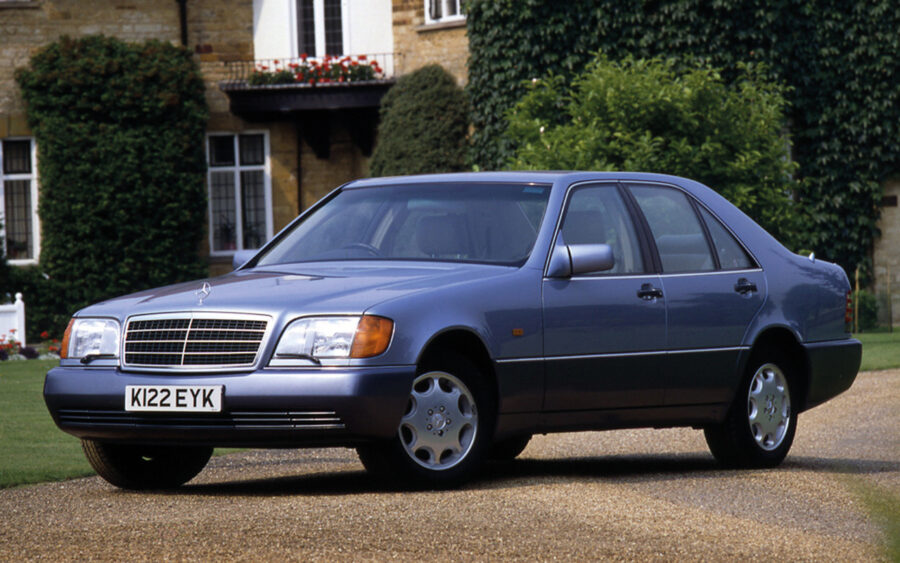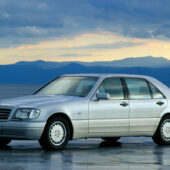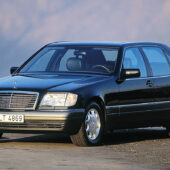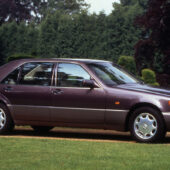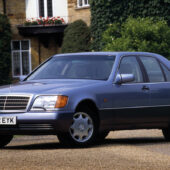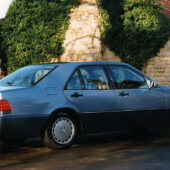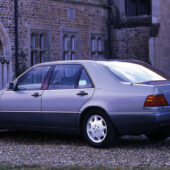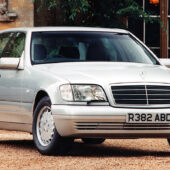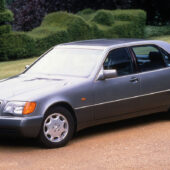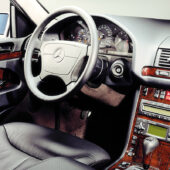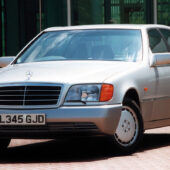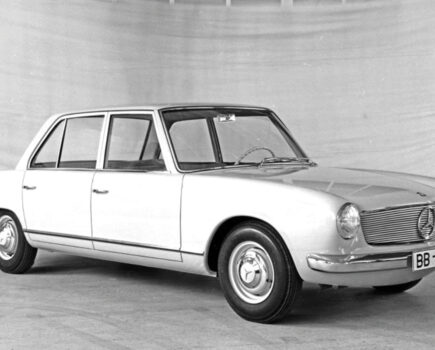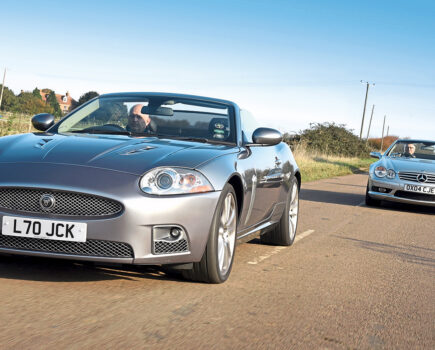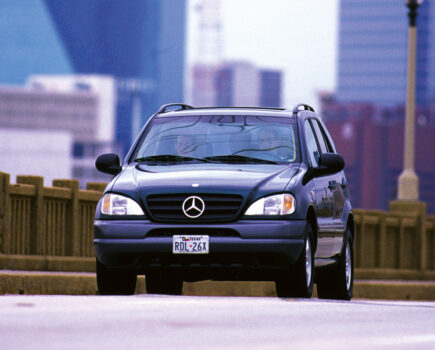One of the most advanced luxury cars of the 1990s, the W140 S-Class still impresses today. Here’s how to buy one
Words: Sam Skelton Images: Mercedes-Benz
Launched in 1991, the Mercedes W140 was designed as a replacement for the W126 range of S-class saloons. It was intended as the best car in the world, and carried on Mercedes’ tradition of technical innovation to demonstrate that status. Double glazing and parking aids had been previously unheard-of in mainstream cars, and both were available on the biggest Benz of the 1990s as standard.
Development work had begun in 1981, and the car incorporated new features which would become industry standards, including CANBUS wiring and self-closing panels. Bigger than its predecessor, Mercedes claimed that this was a measure to accommodate the changing size of humans – but most of the world felt that it was a step too far, and too large to be practical. It was the last Mercedes to be created under the eye of Werner Niefer, and was meant as a riposte to the E32 BMW 7-series which had been shown to him ahead of launch by friend Dr Wolfgang Rietzle. The Mercedes would be the best and most imposing car in the world.
And yet, with few exceptions, the world rejected it. Deemed an extravagance by most of the press and too large by many of its traditional clientele, the W140 sold in far smaller numbers than its W126 predecessor. Despite its old-school approach and up to date tech, the market initially rejected it. A mid term facelift helped matters, but it’s only really now the model has matured into classic status that it has become as desirable as it always ought to have been.
There were three phases of W140 production – phase 1 cars ran from 1991-1994, phase 2 ran from 1994-1996, and phase 3 from 1997 until the W220 was launched in 1998. Phase 2s can be identified by clear indicator lenses, a swage line on the side claddings, and a revised radiator grille. Phase 3s featured white indicator lenses and body coloured claddings.
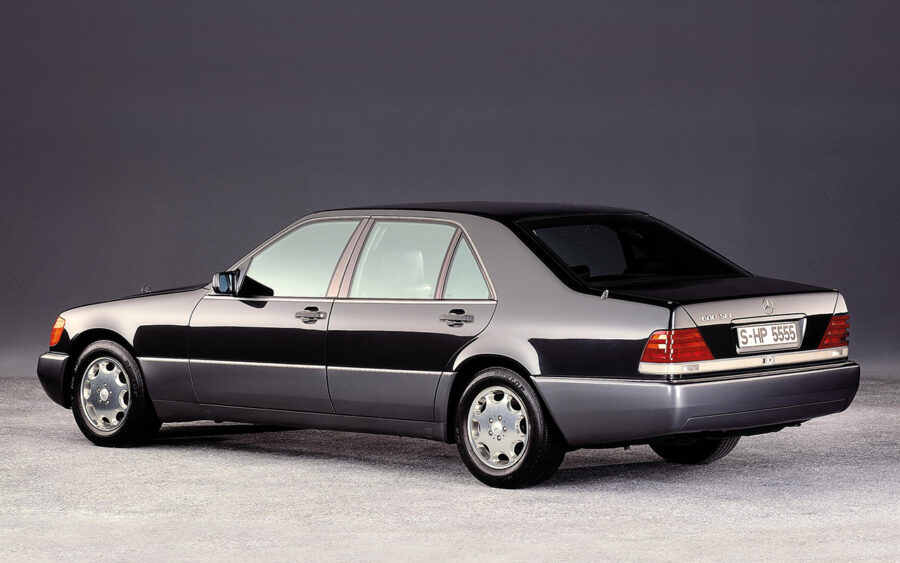
Bodywork
The W140 was 2.6 inches wider and 2.3 inches taller than its predecessor, but the length remained broadly similar. The silhouette not only looked smoother but was smoother; with a drag coefficient reduced from 0.37Cd to 0-30Cd.
Unlike its predecessor and the majority of similar cars, the W140 is rather resistant to rust. Front wings can begin to rust where they meet the bumpers and around the indicators owing to trapped mud, but not to the same extent at other, smaller Mercedes can. Wheelarches are another favourite spot on cars which haven’t been cared for. An odd W140 trouble spot is around the boot lock area, which can begin to corrode around the barrel. Rear lights can show signs of moisture, which indicates corrosion issues behind the fittings – but as with most W140 corrosion this is often surface. It is very rare to see a car with major holes – if you do, we advise you to walk away and look for one of the scores of better examples for sale.
Engine and transmission
The W140 range uses a range of engines from the M104, M119, and M120 families. The M104 six-cylinder is used in both 2.8-litre and 3.2-litre variants, the M119 as a 4.2-litre and 5.0-litre V8, and the M120 as a 6.0-litre V12.
The M104 is a reliable engine in use, with its biggest problems being oil leaks. It can leak from around the rocker cover gasket – and from the oil filter. Barring that, these engines are mechanically good, and there is little with which to concern yourself.
The M119 is similarly hardy – although the timing chain and guide should be changed every 90,000 miles, so check for evidence of this. Cam oil feeder tubes can break, although these are simple to replace and aluminium replacements are available.
Early W140s are prone to issues caused by the underbonnet wiring loom. Between 1992 and 1996 Mercedes used biodegradable wiring looms as part of a commitment to the environment – great for the many thousands of recycled cars, but less so for those which have withstood the test of time. It’s possible to source a replacement loom, but you should check that the job has been done before you part with your cash, or negotiate a price which accounts for replacement. Budget up to £1000, depending upon how proficient you are and how cheaply you can source a replacement loom.
W140s were supplied with three different types of gearbox: A five speed manual, the 722.3 four speed automatic to 1996, and the 722.6 five-speed automatic from 1996 onwards. The manual is rare and was fitted only to the S280 – the gearbox was shared with the W124 and is a robust gearbox. Likewise both automatics – neither is known for giving faults in service, and both last well.
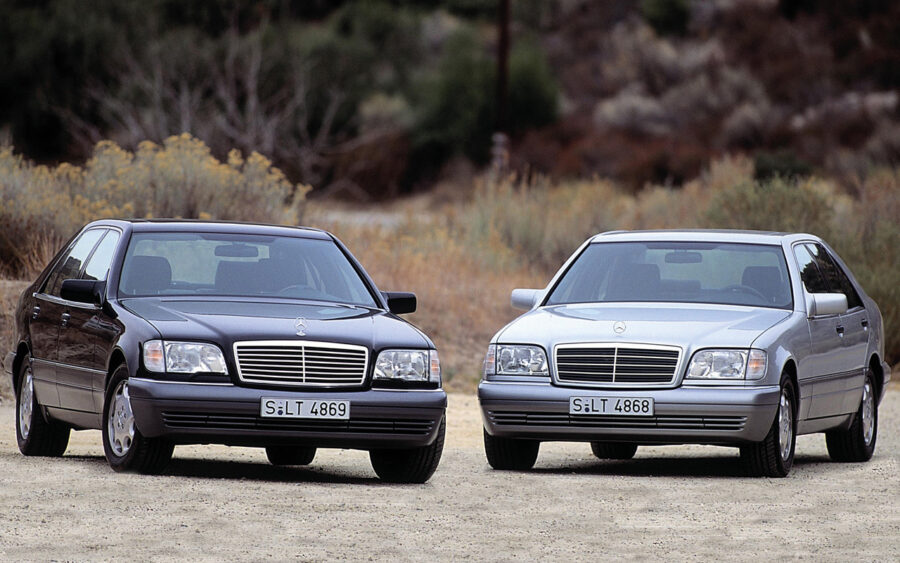
Suspension, steering and brakes
All W140s used the same basic suspicion system; double wishbones at the front with an independent multi-link system at the rear. Coil springs and gas-filled telescopic dampers were used on all four corners, with self-levelling to the rear of the 500 and 600 LWB models. V12s also featured ADS Adaptive Damping, with a choice of Sport and Comfort modes. Check the springs and dampers for signs of wear or leaks, and on test make sure that the adaptive suspension works when fitted. There should be a discernible difference between Comfort and Sport settings.
The W140 is a heavy car so listen and feel for warped discs. Similarly, tyres are big and expensive to replace yet wear quickly thanks to the car’s weight.
Interior, trim and electrics
Typically Mercedes W140 interiors are fairly hardy, as evidence by those which have done 200000 miles or more. Drivers seat bolsters can wear, though this is less common on the more frequently-seen leather interiors. The lacquer on walnut veneers can split, and LCD panels can drop pixels. As a rule, this is about the worst you will find. Mercedes-Benz specialists such as www.w140.com should be able to source the majority of secondhand trim should it be needed – though items for the long wheelbase variants might be harder to find.
It’s important to check the self-close door mechanisms. These operate by vacuum, as with the central locking, and can fail through perished pipework as the cars get older. It can be a faff to fix, albeit relatively inexpensive.
Also beware a leaking air conditioning system as this can be a very expensive issue to fix if the car’s dashboard needs to be removed.
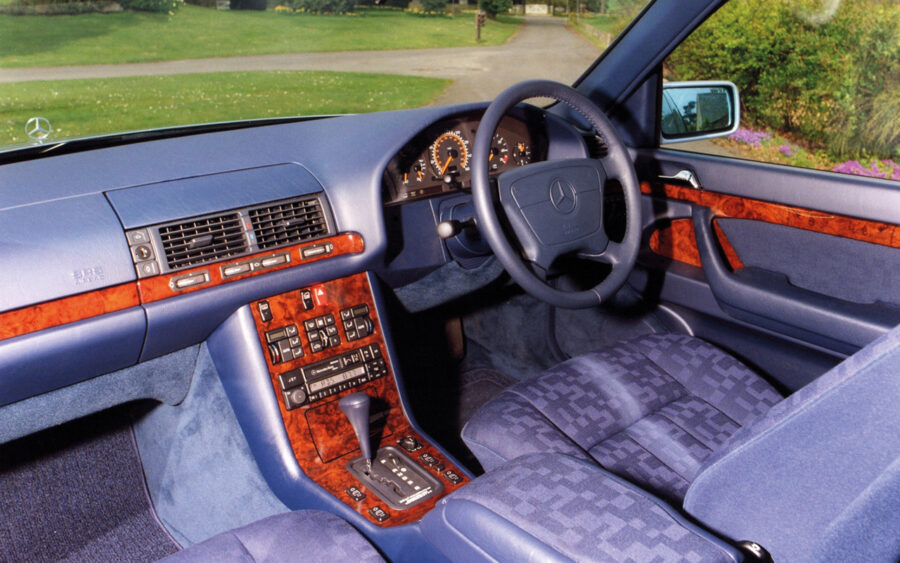
Mercedes S-Class (W140): our verdict
Now is definitely the time to buy the W140 – it’s long been undervalued, and as prices for the W126 strengthen more enthusiasts will focus on the W140. We’d avoid S280s, and focus on 300SEs and S320s for regular use. The 500 is a desirable package, while the 400/420 makes a good all-rounder. The V12 is often best specced, but costly to fuel and to maintain.
The market for the W140 has definitely strengthened of late, and values are beginning to reflect that. Project cars can still be found for under £2000, though the days of finding something usable within that budget are behind us. Cars suitable for everyday use will typically cost between £4000 and £6000 depending upon condition and model; as a rule the six cylinder models are worth the least, with the S500 and S600 commanding the strongest values.
Cars worthy of collectors can easily break five figures, but these will typically be too nice for everyday use. Avoid manuals, cars with cloth seats, steel wheels and no air conditioning. The S-Class was built to be the best car in the world when new, and you may as well enjoy the comforts which come with that.

